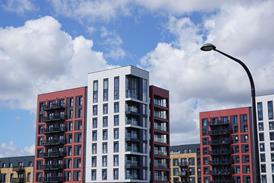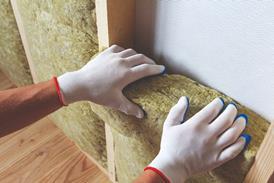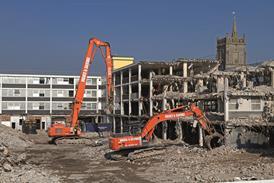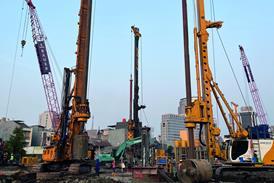When timber frame was taking a rapidly increasing slice of the housebuilding market in the 1980s the brick and block industry responded by putting together a series of publications under the title Efficient Masonry Housebuilding. They needn’t have bothered. The World in Action team stopped the timber frame train in its tracks with its infamous documentary in 1983. Since then, blockwork has regained pole position everywhere except Scotland, being preferred because it is well understood, reasonably cheap, forgiving, and because, rightly or wrongly, the housebuying public is mostly very comfortable with it, and a little bit uneasy with everything else.
Now with housebuilders searching for ways to increase leanness and efficiency, this pioneering work is ripe for revival. The rationale behind Efficient Masonry Housebuilding was to facilitate lean construction methods at the design stage, rather than working out how best to build whatever design is presented. The guidance sought to show that efficiency could be designed into the building process itself using the technique of design rationalisation. This involved:
- following the same building sequence in every house type
- designing for fewer and larger operations - that is, discreet parcels of trade activities, uninterrupted by other trades
- simplifying the construction process
- standardising components
- designing with a dimensionally coordinated framework to improve the fit of components and to reduce cutting and waste.
A BRE study undertaken in Scotland at the time showed that, by rationalising house design, the number of hours taken to build a house could be reduced by nearly 30% without involving any off-site fabrication at all.
Of all the ideas examined in Efficient Masonry Housebuilding, the most intriguing is the use of a 300 mm grid on which to hang every element of a house. The idea behind this was to make on-site operations that much simpler and therefore minimise errors. The logical extension of this was to produce special rods and tape measures which only show the numbered grids, eliminating the need to read accurate dimensions off a drawing. In fact, with a grid system, the site plans don’t need to be dimensioned at all. Another idea developed from this was to minimise the information on plan so that only the critical setting out features were shown: if the design was based on a grid system then this greatly reduced the problems inherent in the correct placing of built elements.
Some of the ideas have now been absorbed into mainstream housebuilding. Details such as preventing cold bridging, advanced in 1984, are now standard. But the main thrust behind Efficient Masonry Housebuilding was not to do with structure, but with the whole building process. Housebuilding has seen plenty of innovative products but has paid less attention to analysing performance. Perhaps it’s time for a fresh look.
Efficient Masonry Housebuilding: the Design Approach and the Detailing Approach are available as a package for £35 inc p&p. Tel: 01344 725704.
Source
Building Homes



















